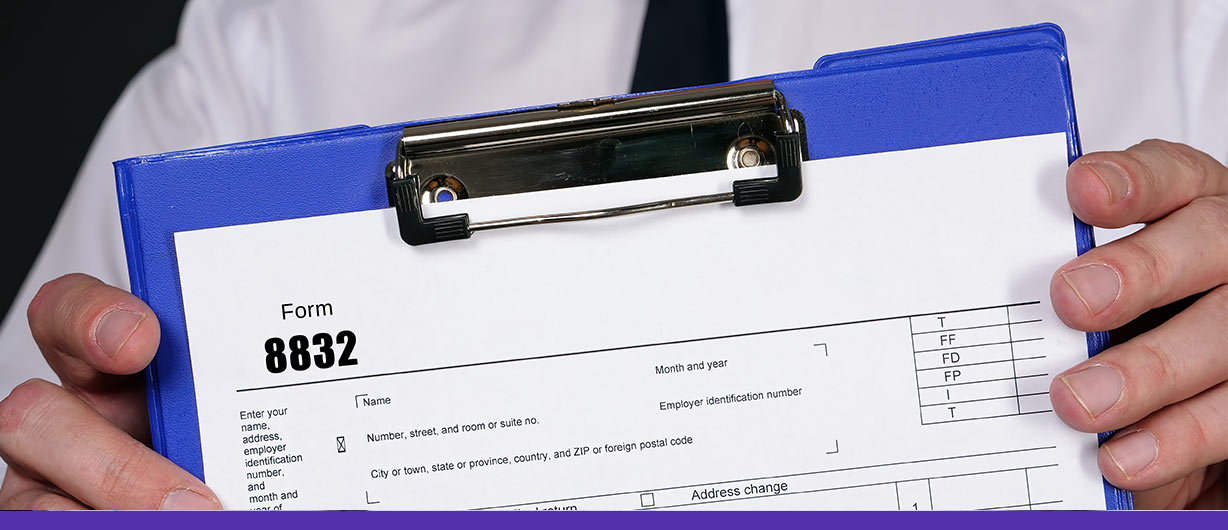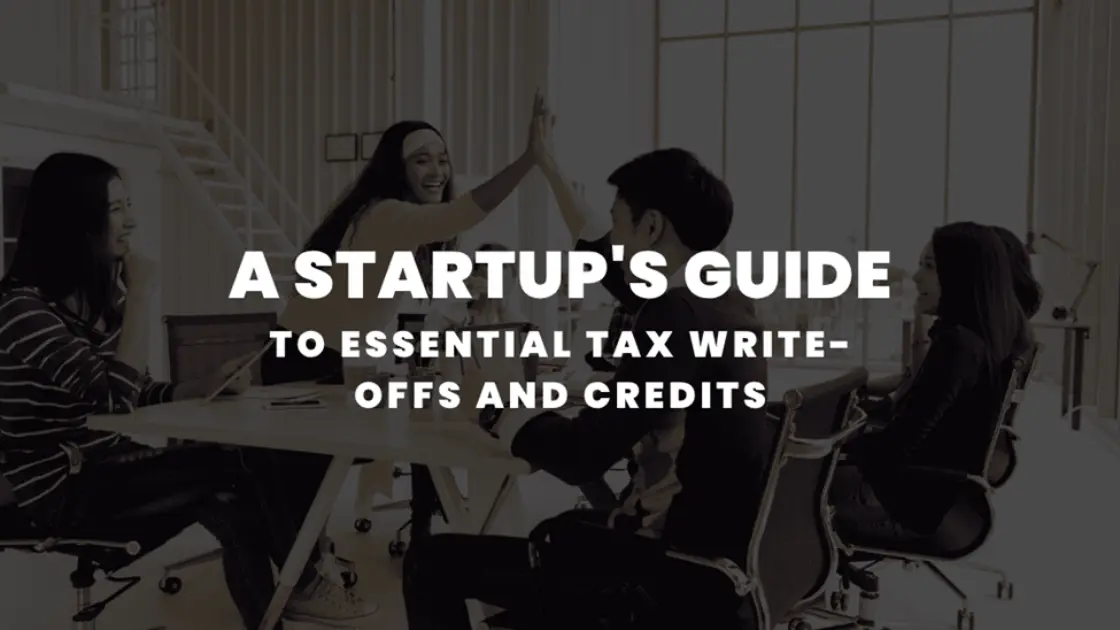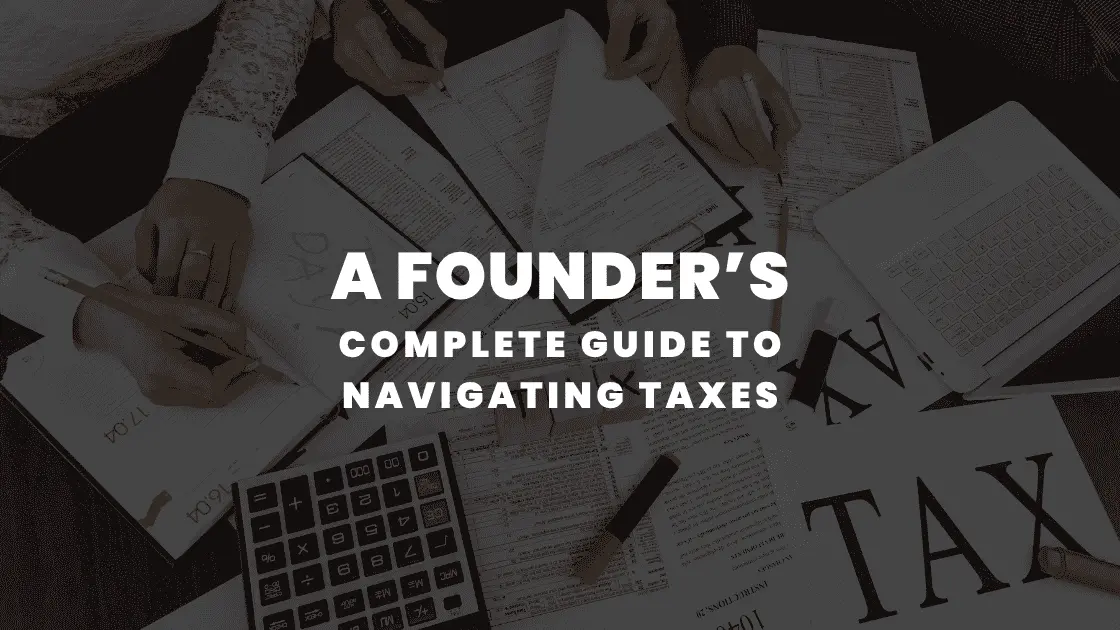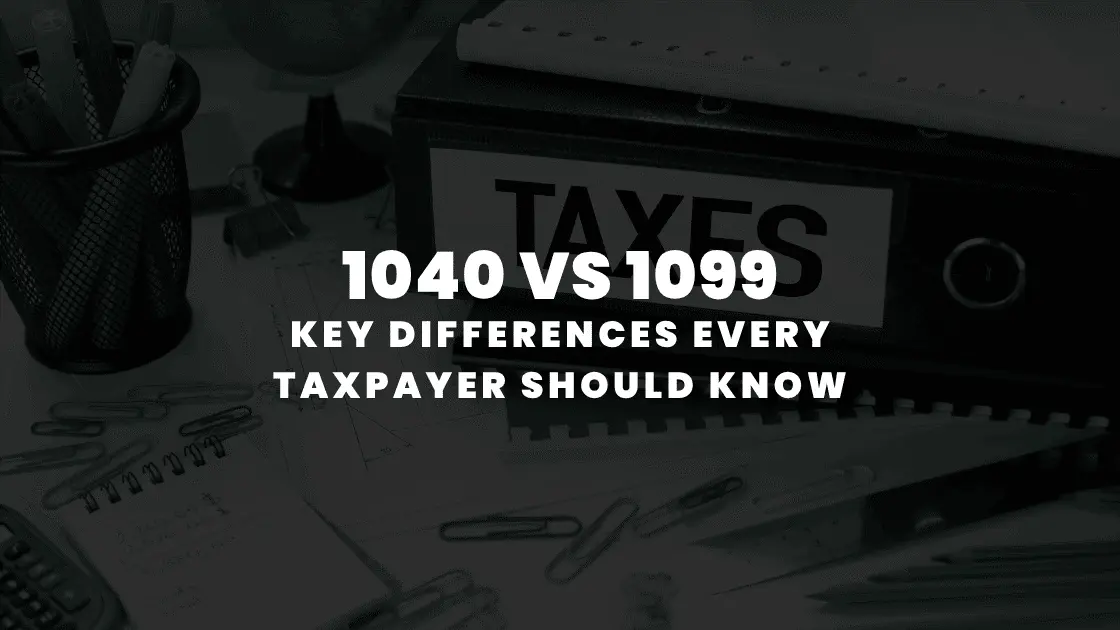October 4 2023 | By Wajiha Danish | 6 minutes Read

What is Form 8832 Used For?
Using Form 8832 to Become a C-Corp
Using Form 8832 to Become an S-Corp
Using Form 8832 to become a Sole Proprietor or Partnership
How to Complete Form 8832: A Step-by-Step Guide
Part 1: Initial Information and Eligibility
1. Begin at the Top
2. Respond to Six Questions
3. EIN Remains Constant
4. Line-by-Line Detail
Part II: Missed Deadline Explanation
Endnote
Tax form 8832 is used by partnerships or Limited Liability Companies (LLCs) to pick or change their tax classification. In short, Form 8832 lets taxpayers elect to classify their entity structure from one type to another. Our easy guide will show you how to fill out this form so you can change how your business is taxed by the federal government.
Form 8832, called Entity Classification Election, is used by eligible businesses to say if they’re a corporation, partnership, or not separate from their owner. LLCs can choose to be treated like a C Corp or go back to being a sole proprietor or partnership. Changing your status can have benefits, like lowering your taxes. Let’s talk about who should think about using Form 8832.
If you’re a sole proprietorship or a corporation, you can’t use Form 8832. You also need to file it 75 days before or 12 months after making the election, unless there’s a good reason for being late, you’re in good tax standing, and you file it within 3 years.
Once you know you can use it, think about whether picking a new business type makes sense for you. Now, let’s look at the benefits of each type you can pick with Form 8832.
Both single and multi-member LLCs can choose to pay taxes as a C-Corp using Form 8832. But this means owners might have to pay taxes twice, because C-corps don’t pass income through.
The good things about being a C-corp are:
– Lower tax rate of 21%
– Deductions for salaries, health insurance, donations, and more
– Carrying over losses
– More flexibility with fiscal years
Generally, bigger businesses become C-corps. But even smaller businesses aiming to grow might benefit, as the lower tax rate and deductions can outweigh the double taxation.
Both single and multi-member LLCs can also choose to pay taxes as an S-corp using Form 8832. Unlike C-corps, S-corps pass income through to owners, who become employees.
The benefits of being an S-corp include:
– No self-employment taxes on distributions
– Setting up SEP IRA plans
– Deducting healthcare premiums
Business owners who can pay themselves a “reasonable salary” and make annual distributions of at least $10,000 might benefit from switching to an S-corp. When owners are employees, as S-corps require, they must pay self-employment taxes, which can be costly. By putting most income into distributions except for their “reasonable salary,” they avoid paying high self-employment taxes.
If you’re a single or multi-member LLC, you can use Form 8832 to go back to being a sole proprietor or partnership. S-corps and C-corps offer tax benefits but also more rules and complications.
For those wanting to simplify their business, going back to being a sole proprietor or partnership might be a smart choice. It means fewer rules and tax complications to deal with.
Form 8832, despite its rather formal appearance, doesn’t have to be a daunting task. In fact, it can be filled out relatively quickly if you follow the instructions carefully. It’s designed to help businesses change their tax classification, and it’s divided into two parts. Let’s break down the process into more detail:
At the very beginning of the form, you’ll be asked for some fundamental information about your business. This includes the name of your business entity, its Employer Identification Number (EIN), and its address. These details serve as the foundational information for your submission.
In Part I, there are six crucial questions to answer. These questions are designed to determine if your business is eligible to file Form 8832 and to gather essential information about your existing and desired tax classification. If the answers to these questions indicate that your business is not eligible for this form, you will be informed promptly.
One important point emphasized by the IRS in Form 8832 is that the EIN remains unchanged, even if your business entity type changes. However, if you don’t have an EIN yet, you must apply for one using Form SS-4, known as the Application for Employer Identification Number. You need to obtain your EIN before submitting Form 8832.
– Line 1:
This line determines the type of election you’re making. Remember not to file Form 8832 if you want your business to be classified under the default rules.
– Lines 2a and 2b:
These lines determine your eligibility based on when you last filed Form 8832. If you filed an entity election within the last 60 months, excluding your initial filing, you are not eligible to use this form again.
– Line 3:
This line checks if your business has a single owner or multiple owners. If it’s owned by a single person, select “yes.” If it has multiple owners, choose “no.”
– Line 4:
If you answered “no” on Line 3, this is where you enter the name and identifying number of the owner.
– Line 5:
If you answered “yes” on Line 3, this is where you enter the name of the parent company and its EIN.
– Line 6:
This line is where you declare your business entity type and specify the changes you wish to make.
– Line 7:
Line 7 is applicable only to entities organized in foreign jurisdictions. Here, foreign entities must declare the country they operate from.
– Line 8:
Declare when you want the election to take effect.
– Lines 9 and 10:
These lines are reserved for collecting your contact information, so the IRS can get in touch if they need more details.
Part II of Form 8832 is straightforward and is only required if you missed the filing deadline for the form. Here, you are provided with a few lines to explain why you couldn’t submit your classification election on time. Additionally, this section requires signatures from owners, officers, managers, or members of the electing entity to validate the explanation.
After meticulously completing Form 8832, the final step is submission. Where you send your form depends on your filing location. It’s essential to make sure you send it to the correct address or submit it electronically if that’s the preferred method.
Form 8832, called Entity Classification Election, is used by eligible businesses to say if they’re a corporation, partnership, or not separate from their owner. By following the above step-by-step instructions, you can navigate Form 8832 with ease, ensuring that your business’s tax classification is aligned with your desired preferences. Simplify your business finances with Monily’s accounting and financial solutions. Contact our team of experienced professionals now for personalized assistance or book a complimentary consultation today.
Related Resources:
Subscribe for business tips, tax updates, financial fundamentals and more.
MORE BLOGS

Starting a business is exciting, right? There’s innovation, there’s growth potential, and the thrill of building something from scratch. But amid all the planning, entrepreneurs often […]
Learn More →
Starting a business is quite thrilling, until tax season arrives. For founders, understanding the nitty gritty of startup taxation can make a difference between financial efficiency […]
Learn More →
Tax season can be overwhelming, especially when you’re staring at multiple forms with numbers instead of names. Two of the most common, and often misunderstood, are […]
Learn More →